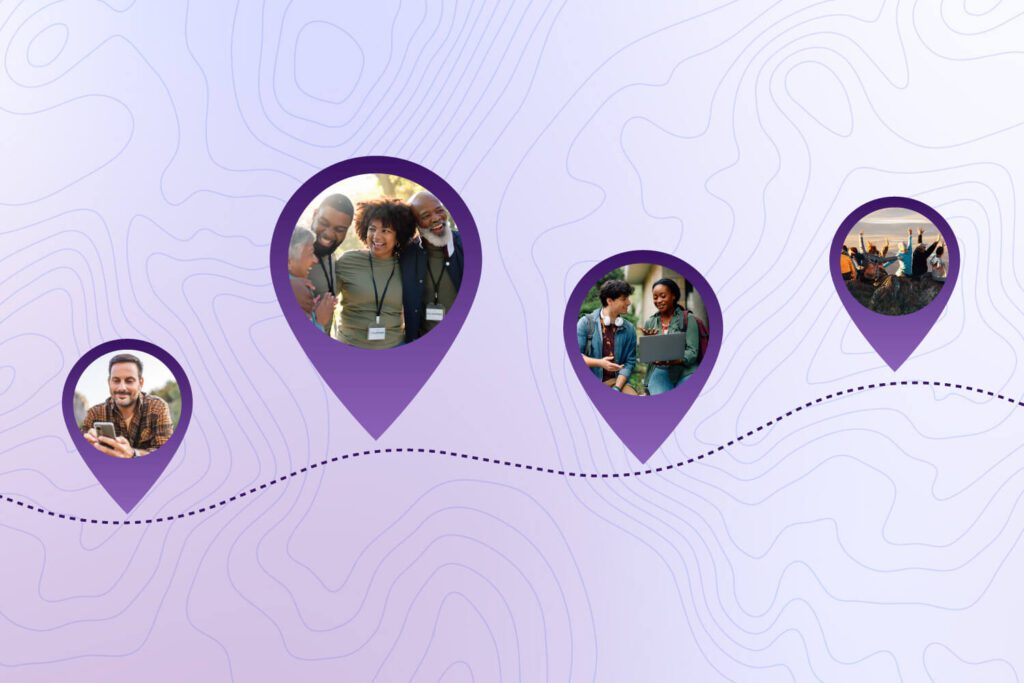Introducing the Fundraising Effectiveness Project.
For many social good organizations, having access to trusted data at the industry level is essential in developing a deep understanding of the current environment in which they are growing their mission. Through the formation of the
Fundraising Effectiveness Project (FEP) in 2006 by the Association of Fundraising Professionals (AFP) and the
Center on Nonprofits and Philanthropy at the Urban League, data is collected and analyzed with the purpose of empowering organizations to fundraise more efficiently. This data is currently administered jointly by AFP and
Giving Tuesday.
FEP releases quarterly reports that assess the current fundraising landscape and provide up-to-date metrics that delve into how the sector is performing, allowing your organization to have a clear sense of where trends are headed at all times and how it can respond appropriately to them.
These reports are always
free to download and play an essential role in making data more equitable for organizations of all shapes and sizes, ensuring you are equipped with strategic insights to make data-driven decisions that drive impact.
Understanding the findings.
The most recent report out of the FEP covers the second quarter of 2022 and was published on October 13, when many organizations are deep in year-end fundraising campaigns. It sheds some light on the current fundraising landscape: donations have declined by 2.5%, and donor support has dropped by 13%, before adjustments for late reporting data. While I know that these numbers may feel intimidating at first glance, you can see them as an opportunity to be courageous and creative as you look for ways to further engage your donors.
Still, the trends observed from the Q2 report may leave many organizations wondering,
‘What do these trends foretell for year-end giving and how can I use this knowledge to make year-end a success?’
It’s interesting to take a step back and look at how these numbers correlate with additional factors not just affecting the social good industry, but the entire country. The Giving Institute notes that there are strong correlations between giving and the economy. Our internal analysis at Bonterra reveals statistically significant correlations between the decline in philanthropic giving and the declines the S&P 500 has experienced several times this year, the unemployment rate (-.206), and the personal savings rate (.174). The uncertainty we see in the economy is confusing at best, and it remains increasingly difficult to read the tea leaves in this current state.
Let’s put these year-to-date shifts into context. In 2020, we experienced an unprecedented increase in dollars raised and donor giving in response to the growing needs of the COVID-19 pandemic. Because 2020 was an outlier year in terms of fundraising growth, the declines in 2021 and 2022 impact numbers are exaggerated.
When compared to the end of 2019, donations had actually grown by 6% as of June 2022.
The same is not true, however, for the number of donors giving, which has been more difficult to maintain after the COVID bump. This trend of declining donors is not new and has been happening for the last 10 years. Through 2021, the number of donors reduced by 10% since 2012, as reported in the most recent FEP Annual Report, and donations increased by 72%. The causes for this long-term trend of more dollars from fewer people could be related to the widening income gap, expansion of new nonprofits, proliferation of ways to give, dramatic increases in cost to acquire and retain donors, or any number of obstacles nonprofits face. So, what can you do about it?
Continue to drive fundraising activities through year-end.
Heading into the year-end, one thing I strongly encourage is the need for your organization to be out there fundraising. This may sound like an obvious statement, but it is a common notion for organizations to pull back on fundraising during difficult financial times. And as a direct result of this, we have seen large declines in donations from organizations that did not fundraise during the pandemic, many of whom are still trying to catch up.
It is easy enough for me to say, “don’t stop fundraising,” but I understand that when your board or finance team is looking at the investment to acquire donors and balancing it with the need to serve your constituents, the decision is not always an easy one. An exercise to better understand the importance of continued donor acquisition is to calculate the lifetime value of your donors compared to the cost to gain and retain your donors. A proper evaluation of this will lead to smart, informed decisions and will serve as a powerful tool in illustrating that investing in these critical fundraising streams, even in uncertain times, yields additional services for your participants in the long run.
Remember that asking for money to fund social good is never a bad thing. If you are authentic and compelling and illustrate the impact of each gift, an ask can be inspirational and positive.
As you approach year-end fundraising with these insights fresh in your mind, I encourage you to look for ways that you can lean into storytelling and continually seek opportunities to get in front of new audiences!
Read the full
Fundraising Effectiveness Project Q2 Report.
About the Author:
Ben Miller is an entrepreneur drawing upon degrees in mathematics and systems engineering to advance applied data science in the nonprofit sector. He is the senior vice president of data analytics at Bonterra and has helped raise billions of dollars from tens of millions of donors for thousands of organizations over his career. Ben serves on the Research Council for the Association of Fundraising Professionals and is the chair of the Fundraising Effectiveness Project.
Through his work with the Fundraising Effectiveness Project, Ben is striving to democratize and expand fundraising analytics throughout the sector. The Fundraising Effectiveness Project is an all-volunteer group of researchers, data providers, analysts, and practitioners that funds research, provides free tools, publishes reports, and collaborates with universities, associations, and nonprofits with an aim to increase the nonprofit’s share of GDP. You can find additional research on the
FEP website.





